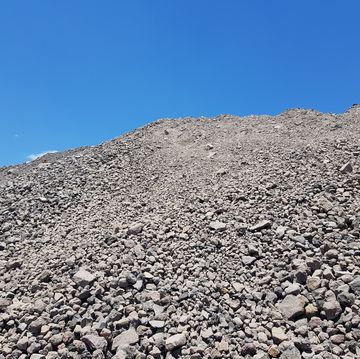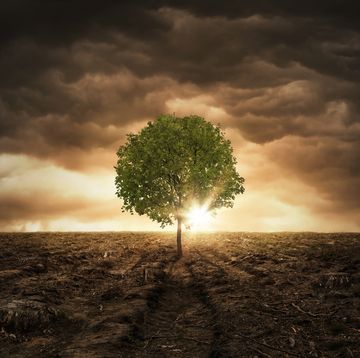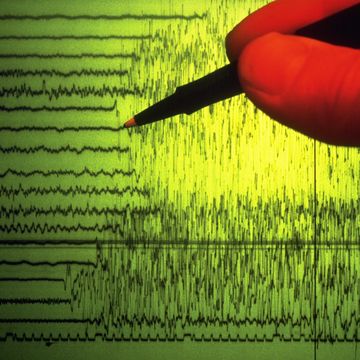On Oct. 22, 2012, the low pressure system off the coast of Jamaica was designated Tropical Depression Eighteen. A week later, at 7:30 pm on Oct. 29, 2012, Superstorm Sandy blew ashore at Brigantine, N.J.—a barrier island just north of Atlantic City, N.J.
The storm had spent that week barreling up from the Caribbean, where it damaged 200,000 homes in Cuba and killed 80 people in Haiti. By the time it took a left turn and hit the northeastern U.S., the storm stretched 1000 miles across and impacted people in 24 states. In Brigantine the storm surge and wind damaged 2300 homes. It hit another 58,000 across the rest of New Jersey. Reports by the National Oceanic and Atmospheric Administration and the federal government's Hurricane Sandy Rebuilding Task Force estimated that 650,000 homes were either damaged or destroyed in Sandy's impact zone.
How Bad It Really Was
Sandy wreaked most of its havoc with the overwhelming storm surge that reached 14 feet in parts of New York City. Off the shores of Monmouth County, N.J., the waves reached a record 32 feet. On suburban Long Island, 100 million gallons of raw sewage spilled into Hewlett Bay, and that was just a fraction of the 3.5 billion gallons of raw sewage that washed into waterways and poured into neighborhood streets as treatment plants along the East Coast were flooded. In West Virginia and North Carolina there were blizzard conditions and 3-foot snowfalls.
In total, 159 people were killed during the storm and in the aftermath. Many drowned in the floodwaters, but others were killed by downed power lines, falling trees, chainsaw accidents, carbon monoxide poisoning from portable generators, and falls in the dark. All of this happened as the region's hospital system creaked under the strain of Sandy. Six hospitals were forced to close in New York City and two more were evacuated in New Jersey.
And even a month after Sandy made landfall, an estimated 12,000 people in the greater New York City area were living in unheated apartments.
What's Changed?
The states that endured Sandy's wrath have spent the last year trying to change their laws to get residents away from the danger zones. In New Jersey, for example, new state rules require homeowners to elevate their homes if they are in a FEMA demarcated flood zone and if their homes were substantially damaged. Aid is available for this process, but accessing it has been difficult for homeowners. And back in Brigantine, less than 50 elevation permits have been granted as homeowners sort though red tape.
In New York the state set aside $171 million to purchase damaged homes at pre-Sandy valuations. The idea was homeowners could move to a safer location without losing the investment in their homes. But things haven't gone according to the state's plan—most homeowners are choosing to rebuild rather than leave. New York state estimates that at most 10 to 15 percent of affected homeowners will eventually pursue a buyout. In New York City a similar buyout plan is proving more successful in some neighborhoods that were hard hit by floodwaters, such as the Oakwood Beach neighborhood of Staten Island.
In the wake of Sandy a Building Resiliency Task Force recommended 33 changes and improvements to New York City's building code. To date the city has enacted five, including requiring backflow valves in flood-hazard areas to prevent sewage from backing up into homes and businesses. Another requires the city to update and clarify building requirements in flood zones. Proposals that have been introduced to the city council include requiring builders to install wind-resistant windows and doors on new construction and remodels.
The New York City subway system, which was largely knocked off-line during Sandy, has undergone its own hurricane-hardening. Ducts have been sealed and a new $15 million seawall has been built in Queens to protect the A line, which was swamped during Sandy. According to The New York Times, the MTA is also considering submarine-style watertight doors and other high-tech dams that can be closed in advance of a storm.
The Next Hurricane
As bad as Sandy was, it could have been a lot worse. If the 1938 Great New England Hurricane—also known as the Long Island Express—were to hit today, the damage would likely dwarf the $65 billion in damage from Sandy. As it was, the 1938 hurricane killed more than 700 people, left 63,000 people homeless, and sank some 3000 boats along the northeastern coastline.
"Sandy was unusual because it came in perpendicular to the coast," says Karen Clark, whose business, Karen Clark & Company, provides catastrophe risk assessment for the insurance industry and other large corporations. "If we had a hurricane that was the intensity of Sandy, but that took a similar path as Irene in 2011, then the damage could be two to three times what we saw with Sandy."
According to Clark's analysis, New York state alone has $5 trillion in property exposure along its coast and New Jersey another $1 trillion. Development along coastal regions has meant that even minor storms can cause hundreds of millions in damage.
Clark, for her part, says she feels positive about developments in the wake of Sandy, including building code changes and buyback programs. "It's a start," says Clark. "But it's a very positive one. The mind-set has now changed from 'it will never happen here' to 'what can we do to prepare for the next one.'"
John Galvin is a contributing editor at Popular Mechanics and host of the new disaster prep video series at PopMechU.com. Follow him on Twitter at @JohnPGalvin.













